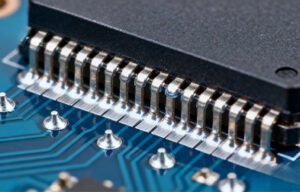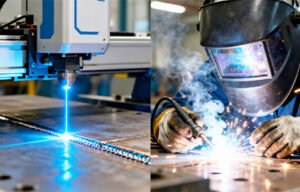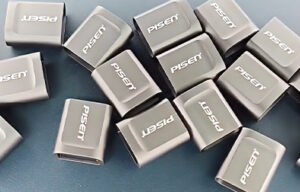High Precision Laser Welding Machine for New Energy Battery Manufacturing | JOYLASER
Laser Welding Machine for New Energy Battery Applications
1. Introduction to New Energy Battery Manufacturing
The global shift toward clean energy and electrification has led to rapid growth in the new energy battery sector. From electric vehicles (EVs) to energy storage systems and portable electronics, battery technology is evolving fast. In this transformation, manufacturing processes must meet increasingly high standards for efficiency, accuracy, and safety.
Laser welding has emerged as a critical technology in the assembly and production of lithium batteries and other types of energy storage cells. With its precision, speed, and flexibility, laser welding outperforms traditional methods and supports the high-demand production environments of modern battery factories.
2. The Role of Laser Welding in Battery Production
Laser welding is used to connect battery tabs, electrodes, casings, and modules with minimal heat impact and excellent precision. It is essential in manufacturing:
Lithium-ion battery cells
Cylindrical, pouch, and prismatic battery types
EV battery modules and packs
Energy storage units
Power tools and consumer electronics batteries
By using a high-intensity laser beam, components are fused with exceptional control, avoiding the deformation and overheating often associated with conventional welding methods.
3. Advantages of Laser Welding for Battery Applications
Laser welding technology offers several benefits for battery production lines:
High precision: Focused beams allow for micron-level accuracy, which is critical for delicate battery components.
Low heat input: Minimal thermal distortion protects sensitive internal structures.
Fast processing speed: Greatly improves production efficiency.
Automation-ready: Easily integrated into automated production lines or robotic arms.
Clean welds: Produces smooth, contamination-free weld seams.
Non-contact process: Reduces tool wear and maintenance.
These advantages make laser welding a preferred choice for high-performance and large-scale battery manufacturers.
4. Types of New Energy Batteries That Require Laser Welding
Laser welding machines are used in various battery types, including:
EV batteries (electric vehicles)
Lithium-ion batteries
Nickel-metal hydride batteries
Solid-state batteries
Battery packs and modules for energy storage systems
From cell welding to pack assembly, the laser welding process ensures strong electrical connections and structural integrity.
5. Key Features of JOYLASER’s Battery Laser Welding Machine
JOYLASER offers customized laser welding machines designed specifically for battery manufacturing. Key features include:
High beam quality and energy stability
Multiple welding modes (spot, seam, and pulse welding)
Integrated vision and positioning systems for precise alignment
Real-time monitoring and quality control
Compact design for flexible production setups
Compatibility with automation lines and robotic systems
Customizable fixtures for various battery sizes and shapes
Our machines are compatible with different laser sources such as fiber lasers, UV lasers, and customized hybrid options.
6. Applications in EV Battery, Energy Storage, and More
Laser welding plays a vital role in:
Battery cell welding
Tab-to-tab and tab-to-busbar welding
Aluminum and copper joint welding
Battery housing sealing
Module frame welding
Battery terminal connection
Industries served include:
Electric vehicle manufacturing
Renewable energy storage
Power tools
Aerospace and marine energy
Medical and military-grade battery systems
7. Comparison with Traditional Welding Methods
| Feature | Laser Welding | Resistance Welding | Ultrasonic Welding |
|---|---|---|---|
| Heat Impact | Very Low | High | Medium |
| Speed | Fast | Medium | Fast |
| Precision | Excellent | Low | Medium |
| Automation | Easy | Moderate | Difficult |
| Maintenance | Low | High | Moderate |
Laser welding provides a superior combination of precision, speed, and low thermal impact, making it ideal for modern battery production.
8. Technical Parameters and Customization Options
JOYLASER’s battery laser welding machines offer a range of specifications:
Laser Power: 100W – 2000W (customizable)
Spot Diameter: 0.1mm – 1.2mm
Welding Speed: Up to 800mm/s
Positioning Accuracy: ±0.01mm
Cooling System: Water-cooled or air-cooled
Control Software: Touchscreen interface with real-time parameter adjustment
Optional Modules: CCD vision system, auto-focus head, rotary table
Our engineering team provides complete customization based on your battery type, production capacity, and technical requirements.
9. Why Choose JOYLASER as Your Laser Welding Partner
With over 10 years of laser equipment experience, JOYLASER has served clients in over 50 countries. Our strengths:
In-house R&D and manufacturing
ISO, CE, and FDA certified systems
Global after-sales service and support
Professional technical consultation and training
One-stop laser solution provider
We don’t just sell machines — we deliver productivity, reliability, and innovation.
10. Conclusion and Future of Battery Laser Welding
As battery technologies continue to advance, laser welding will play an even more significant role in ensuring safe, efficient, and high-quality energy solutions. Whether for EVs, solar storage, or smart devices, the demand for reliable and precise battery welding will only increase.
JOYLASER is committed to providing cutting-edge laser welding machines tailored for the battery industry. Partner with us to enhance your manufacturing capabilities and stay ahead in the global energy transition.
111-1024x458.png)


